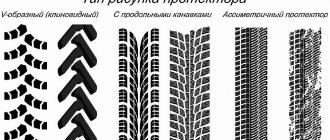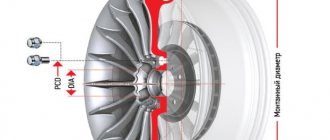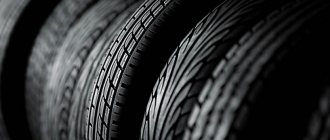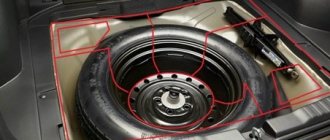There is a law on winter tires in winter in Russia. And this is not the first year. This means that during the 2020 season it is necessary to change to winter tires. All that remains is to figure out when it is necessary to change tires, from what date it is prohibited to drive a car with summer tires: from October, November or December and what the fine will be if you do not change them in a timely manner, as well as what can be considered winter tires and other requirements for them.
When should you change your car's shoes in winter 2020?
According to official law, from December 1, 2020. If somewhere you see data that you need to change to winter tires from November 1 or even October or in other dates in the legislative context, then this is not true.
The legislation clearly and precisely defines the terms within which it is necessary to use only winter tires:
- December (not November),
- January,
- February 2020.
In general, this is all you need to know about the law on winter tires and the timing of their replacement in Russia. If you need “proofs”, then they are lower! It is also important to know the specific requirements for winter tires on your car.
What does the law say?
5.5. It is prohibited to operate vehicles that are not equipped with winter tires that meet the requirements of paragraph 5.6.3 of this appendix during the winter period (December, January, February). Winter tires are installed on all wheels of the vehicle. The terms of the operation ban may be changed upward by regional government bodies of the member states of the Customs Union.
This is an excerpt from the Technical Regulations. The same is written in the traffic rules. As you can see, there is no November, and regarding the time when you need to switch to winter tires, there are 2 important subtleties:
- paragraph 5.5 of the regulations refers to another - 5.6.3 in terms of meeting the requirements for winter tires, even if installed within the period prescribed by law,
- Regional administrations can apply their own rules when changing a car to winter tires.
Regarding the last point, we have good news for you - as of 2020, not a single region of Russia has changed the general procedure for tire replacement periods, and throughout the country you need to wear winter tires starting from the first day of December.
But we need to pay a little more attention to the first point - this is where we are given clear criteria for what winter tires are according to the law in principle. And let's find out!
Are there only summer tires until December?
Of course no. For summer tires, the requirements do not apply to the entire remaining 9 months. It is simply prohibited to drive on winter tires during the summer months - June, July and August, this is prescribed by the same paragraph 5.5 of the Technical Regulations. So, in October or November, for example, you can drive either summer or winter tires.
Studded tires are mandatory from November 1, 2020 - true or false?
Winter tires from November
Winter tires are required in the winter season. And there really is such a law; it is far from new. But a number of news sources indicate changes in current legislation. According to the amendments, winter studded tires are required to be on all cars in Russia on all 4 wheels from November 1, 2020. Some other sources talk about a different date - November 11. Whether all this is true or not, let's find out by looking at official sources of information.
Important note!
- This article provides basic information, but each case is different.
- In 92% of all situations there are important nuances that can affect the outcome of the entire case.
- An experienced lawyer will study all the materials of the case and indicate in which direction to move.
Therefore, our website employs on-duty legal consultants who delve into each case and are aimed at solving it.
or consult toll-free: 8 (499) 938-43-58 (Moscow), (St. Petersburg), 8 (800) 350-14-82 (all of Russia).
What tires are considered winter tires by law?
Everything is quite simple here too! The winter tires that you change from summer tires to December must have 2 essential attributes; without them, they are not considered winter tires, and you, therefore, violate the rules of the regulations:
- marking in the form of a mountain with 3 peaks and a snowflake inside,
- written designation with a combination of the letters M and S.
This is what the marking looks like:
This is what a real winter tire looks like with it:
And the law does not prescribe any differences for winter tires according to their type - be it studded tires, Velcro or all-season.
Other requirements
Another important requirement for winter tires is a limit on their wear. Specific figures are given in the traffic rules - 4 millimeters, this is the permissible remaining tread depth of winter tires. But there is an exception - if your tire is equipped with wear indicators, then you can use such tires until the last indicator.
Also among the requirements for any type of tires:
- absence of side cuts and cracks in which the cord is visible (if the cord is not visible, then you can ride),
- no tire delamination,
- the speed and weight index of the vehicle must correspond to
- all bolts or nuts on the wheels must be present,
- If the tires are studded, then the car must have a Studs sign.
Existing fines for improper use of car tires in 2020
In 2020, Chapter 12 of the Code of Administrative Offenses, which regulates the liability of motorists for violating traffic rules, does not contain any indication of sanctions for non-compliance with the requirements of the Technical Regulations TR CU 018/2011.
And since only it contains a mention of the timing of tire replacement, fines for late replacement of winter tires with summer tires in 2020 cannot currently be imposed.
And yet, traffic police officers have the opportunity to punish the driver with a monetary penalty. But only for non-compliance of tires with the requirements specified in Section 5 of the “List of Malfunctions and Conditions” to the Traffic Regulations. In this case, sanctions will apply under Part 1 of Art. 12.5. Administrative Code:
- warning;
- or a fine of 500 rubles.
For example, the above liability should be expected if the tire:
- has a tread height below the established values;
- has punctures, cuts, and delaminations of the frame;
- does not correspond to the speed index and weight of the vehicle model.
In addition, a warning or 500 rubles will be issued if different tires are installed on one axle of the vehicle (front or rear) on the left and right. For example, the front left has summer tires, and the front right has winter tires. Or one tire is new and the other is retreaded.
The traffic police will also fine you for installing both studded and non-studded tires on a vehicle at the same time (regardless of the axle). For example, 3 wheels have tires without studs, and the remaining one has them.
So it turns out that if you drive in the summer on the same studded tires, then there is no penalty. And if, for example, you put tires with studs, but of different sizes, on one axle in the hot season, then the driver will face sanctions under Part 1 of Art. 12.5. Code of Administrative Offences.
What's the fine?
If you did not have time to change your shoes to winter tires in the 2020 season and are driving on summer tires, then... There will be no fine anyway!
The fact is that the Code of Administrative Offenses in force today provides for traffic police fines for violations of the Traffic Rules. But the obligation to change summer tires to winter ones is not specified in the traffic rules, but, as we quoted above, in the Technical Regulations. There are no penalties for violations of this regulatory act in 2020.
Information is being circulated online that as of December 1, 2019, a fine has been introduced for summer tires in winter. This is nothing more than a myth and you will not find official confirmation of it anywhere.
Everything is quite clear and simple here:
- There is no fine directly for the fact that you did not change your car to winter tires,
- but there are sanctions for non-compliance with tread depth and other requirements for winter tires.
What if a traffic police officer wants to fine you?
Then, with a high degree of probability, he is going to issue a resolution under Part 1 of Article 12.5 of the Code of Administrative Offenses. It provides for punishment in the form of a fine of 500 rubles for non-compliance with the Basic Provisions of the Traffic Regulations, namely, they contain the above requirements for tread depth after tire wear, the presence of a cord, the absence of nuts/bolts and others.
The resolution will say so - violation of clause 5.1 or other Basic Provisions for Vehicle Admission. But the majority of drivers, due to inattention, will not look at the regulation and will assume that they were given a fine for not changing their summer tires to winter ones. And even if they later see that the violation was replaced by a traffic police inspector, it will be difficult to prove the opposite.
What's the news?
Here is typical information about the new winter tire law from November. Also, data is distributed mainly through WhatsApp, Viber and Telegram messengers.
Meanwhile, there are no supporting legislative initiatives in such reports, and the authors refer to alleged changes in traffic rules and the new ability of traffic police officers to fine drivers with summer tires.
Among the main subtleties of the amendments are the following:
- winter studded tires are mandatory on all cars on Russian roads from November 1 (according to other sources - from the 11th) 2019,
- but traffic police inspectors are allowed not to issue a fine the first time, because supposedly not all drivers had time to learn about the new law and prepare by purchasing winter tires,
- The legislation now allegedly requires drivers to install tires only in accordance with the load capacity and speed of the vehicle.
Option No. 2
But there is also other evidence that motorists allegedly misinterpreted the provisions of the amendments. From November 1, studded winter tires are not required, but their use is possible. And before the amendments came into force, changing shoes was allowed only from December 1.
Option #3
And finally, the third type of news is that the new law itself comes into force on November 11. And his instructions concern the mandatory use of winter tires from December 1st.
When is the best time to switch to winter tires?
There are no traffic police requirements regarding such conditions as:
- at what temperature to change shoes,
- from what date before the start of official winter (December) should tires be changed,
- presence of ice on the road surface.
There is only an obligation to operate a car with winter tires in December, January and February.
But according to the experience of car enthusiasts, 2 main stages of transition to winter can be distinguished:
- those who change their shoes immediately after the first snowfall - it is rational to do this if you often drive on the highway, your car is not very stable in turns and/or the summer tires are already pretty worn out; it also makes sense if you have Velcro - after the first snow thaws, they will not deteriorate on clean asphalt,
- those who change their shoes when real winter begins - if you drive mainly around the city, your car has all-wheel drive, then this approach is for you.
Rules for replacing winter tires with summer tires in 2020
For safety reasons, Russian motorists need to change the tires on their car twice a year, putting on winter tires before the immediate arrival of winter, and summer tires immediately after the ice and snow melt. After all, untimely replacement of tires can affect the car’s handling and the safety of passengers.
Many also believe that there are replacement deadlines regulated by law and penalties for non-compliance. In fact, there is a regulatory provision on deadlines, but the current administrative legislation in 2020 does not in any way punish drivers who did not take care of “re-shoeing” the car in time.
When to change your shoes for the summer?
Tires need to be changed to summer ones in Russia in June 2020.
This is what current legislation says, and only if you have studded tires. And even this is relative - we will find out why below. And this issue is not regulated by traffic rules, as many believe. The rules for the use of tires on wheels are regulated by Section 5 of the Basic Provisions (Appendix to the Traffic Regulations), and not a word is said here about the seasonality of the use of rubber.
The prescription of the seasons when it is necessary to install winter tires, and when to install summer tires, is contained in the Technical Regulations - this is today a variation of GOST on the technical equipment of modern cars. But there is not a word in it about the date when you need to switch to summer tires according to the law. It only talks about prohibitions on using winter tires in certain seasons and only with studs:
5.5. It is prohibited to operate vehicles equipped with tires with anti-skid studs in the summer (June, July, August).
Thus, the legal acts of 2020 do not establish a rule at all when to install summer tires after winter. Only one of them stipulates that you cannot drive in the “winter” during the 3 summer months – from June to August inclusive.
But there is an important subtlety!
It consists in the fact that the same Technical Regulations contain a note indicating that in each city it is possible to change such a ban, but only upward:
The terms of the operation ban may be changed upward by regional government bodies of the member states of the Customs Union.
Regional bodies are regions, subjects of Russia. You can find out whether such changes have been made specifically in your region from the official websites of road services or the traffic police of your city. But, as a rule, their appearance is widely covered in the local press.
One thing we can say for sure is that in March, April and May of this year there are none in the largest cities.
- In Moscow, there is a general rule for the Russian Federation - you can legally switch to summer tires in June 2020.
- In St. Petersburg, the ban period was also not changed, and here it operates according to the general rules of the Technical Regulations.
- Even in the warm Crimea and Sochi (as well as throughout the Krasnodar Territory) the period has not been increased.
Procedure for changing car tires
The Technical Regulations of the Customs Union “On the Safety of Wheeled Vehicles” stipulate that in the summer, in particular in June, July, and August, the use of winter tires (studded) is prohibited. If the tires do not have studs inserted, you can drive it in the summer. Moreover, the law states that you can drive on studded tires until the first of June without changing.
To determine the correct procedure for changing winter tires to summer tires, you need to determine the exact date. No one can name her. However, for the central zone of the Russian Federation there is a date according to which all car owners are required to drive winter tires before this date. The legal date for switching to summer wheels is March 15th.
It all depends on individual weather conditions for each region and local laws. If sub-zero temperatures are expected even after this date, for your safety you should not change tires.
Rules for passenger cars
The main provisions of the law that determine the rules for the transition from winter to summer tires on cars are as follows:
- On January 1, 2020, amendments to the law regarding the term “winter tires” and its detailed meaning came into force. The amended articles refer to the permissible tread depth. However, there is no mention of seasonal tires when driving a vehicle;
- Penalties for shifting are permitted by law if the regulations of Part 1 of Article 12.5 of the Code of Administrative Offenses of the Russian Federation have been violated. That is, if the current wheels do not comply with the technical regulations, changes to which are prescribed in the articles. The police inspector may not draw up a report, but simply issue a verbal warning;
- The new technical regulations of the law have come into force. The conditions specified in it apply to summer and winter tires. In summer you cannot drive on studded tires from June to August, and in winter on summer tires from December to February. In accordance with the climatic conditions of individual regions, the shift date may be changed. So far, there is no penalty for such a violation according to the latest legal provisions.
Therefore, the period for changing from winter tires to summer tires is determined individually, depending on the region and climatic conditions.
Procedure for changing tires for trucks
According to the law, changes in the timing of tire changes will also affect trucks. Regional authorities independently determine the period during which only one type of wheel can be used. At the same time, experts say that deadlock situations cannot be avoided.
For example, in order for a truck driver to cover the distance from Sochi to Murmansk, he must change from one type to another several times. Experts in the field of creating legislative norms are proposing changes to the law that will determine the exact date for changing tires.
You should also change the truck's tires if they are unsuitable for subsequent use. There is a procedure for determining tire change indicators:
- Jumpers are visible on the tread;
- A tool is used or determined by eye;
- The depth of the pattern for summer tires must be at least 1.6 millimeters, for winter tires - at least 4 millimeters;
- The degree of wear on studded tires is determined by the number of studs remaining.
If at least one of the above requirements does not comply with the law, the tires on trucks need to be changed.
In what weather is it best to install winter tires?
The answer to this question is quite simple, but requires the driver to pay increased attention to the weather forecast.
Many experts argue that winter tires must be installed when the average daily temperature reaches approximately +7 degrees.
This answer can be considered the most correct, but is it worth rushing when the autumn frost has not become stable?
For example, what to do in weather conditions when the temperature at night can be about 1-5 degrees below zero, and during the day it rises to +15.
At such daytime temperatures, the wear of winter tires will be increased, but the most dangerous thing is the behavior of the rubber on warm asphalt, which will simply begin to float. It is the last factor that is decisive, since the braking distance of a car on Scandinavian-type winter tires in warm weather can increase by several meters.
In this regard, we can conclude that there is no need to rush to install winter tires if the weather forecast does not promise stable negative temperatures at night and in the morning for a long time.
It is necessary to understand that when the temperature drops below zero, you need to monitor the condition of the road surface very carefully. If there was precipitation the day before, you shouldn’t go out on the road, since summer tires are completely helpless on ice. Was there fog at night and frost in the morning? In this case, you should leave the car at home, as a thin, lumpy crust of ice may form on the road, which is dangerous for any tires, especially summer tires.
The intermediate conclusion is as follows: if you use your car frequently and leave early in the morning, then it is better to install winter tires a little earlier than stable winter weather arrives.
If you leave home late in the morning, when the air has already warmed up to positive temperatures, then stay in the summer.
If the weather forecast predicts a stable cold snap, you can install winter tires even in relatively warm weather to get used to their behavior.
If you use European-type winter tires (for mild winters), then feel free to install them in advance.
As a result, we can give the following recommendations for installing winter tires:
Keep an eye on the long-term weather forecast. If two days of cold weather are followed by two weeks of warm weather, it is better to leave summer tires on the car and be especially careful during these two days of cold weather. Don't take risks and don't go out on the road with summer tires if it's frosty outside. This is especially true for those who travel a lot at night and in the morning!
When is the best time to change tires?
The owner of the vehicle must clearly determine the moment when it is time to “change the shoes” of the wheels, depending on the region of residence. In the southern regions, the procedure for installing winter tires is pushed back closer to December, in the northern regions - at the onset of September. The exact date depends on the arrival of cold weather - experienced drivers recommend changing the slopes when the average daily air temperature drops to +5–7 °C.
If you use your car every day for morning and evening commutes to work, the tires should be changed earlier - when the maximum daytime temperature is no higher than 10 °C. The reason is simple: it gets colder at night, frosts come, and in the morning the summer tires will instantly “stuff.” A similar situation will occur in the evening.
To complete the replacement in a timely manner without becoming a source of danger to other road users and without incurring financial losses, consider the following recommendations:
- In the spring, switch to summer tires when the temperature confidently reaches +8 degrees, daytime - plus 10 °C.
- It is better to wear studded tires when driving on snowy and icy roads, and in the spring to remove them immediately when the thaw sets in. Driving on dry asphalt can lead to longer braking distances and loss of studs.
- With the arrival of warmer weather, do not delay the replacement procedure - soft winter slopes quickly wear out when heated. In addition, they impair vehicle handling and make a lot of noise.
- Don't try to save money by buying all-season tires. In moderate and cold climates, these tires do not provide reliable grip on the road surface.
- Change the ramps exclusively in sets - 4 wheels at once.
- Prepare a spare set of tires in advance. Ideally, tires are placed on their own wheels and are pre-balanced. To change the shoes of the car, the car owner does not have to go to a tire shop - all he needs to do is replace the wheels himself.
It is recommended to store winter tires without rims in a vertical position on a wooden rack. The two tires that were previously on the drive axle should be marked with chalk or another method - next season, swap the tires for even wear.
Winter tires, when should they be installed? Why do you need to wear winter tires at all?
All car owners ask the question: “when to install winter tires?”
But for most car owners, this issue is fundamental, since both driving safety and the service life of winter tires directly depend on it. So when should you start replacing summer tires with winter ones? It’s worth starting with the fact that summer tires at temperatures of +5C and below begin to lose their properties. And therefore, it is necessary to install winter tires approximately in mid-October, although it does not happen from year to year. First of all, the time to replace summer tires with winter ones is determined by weather conditions, that is, when the temperature is below +5C, it is necessary to change the car to winter tires. So, many people put on winter tires when snow falls, but at above-zero temperatures the snow will quickly melt, and driving on winter tires at temperatures above +5C leads to rapid wear of the tires.
Rubber varies
The average speed of traffic in winter should be reduced by approximately twenty percent. There is no need to make sudden lane changes or try to slip into gaps in traffic, endangering yourself and other road users.
View gallery
Let's continue. To understand when you need to change your car’s shoes for the winter, it’s worth clarifying how winter tires differ from summer tires. The first thing that attracts attention is the tread pattern. Anti-slip “car shoes” are more massive and textured. It is made from a base that is resistant to low temperatures: the tires retain the desired properties and do not become fragile, like summer tires. The chemical composition of tires is very important!
Standard rules: winter tires are used at temperatures above +5 °C. Summer tires harden as the thermometer approaches zero, increasing the risk of skidding even on a comfortable road. In a normal puncture situation, a tire rupture is not excluded. All-season protectors are stable in the range from -5 °C to +10 °C.
When to put on winter tires
Nowadays, car enthusiasts have different attitudes towards installing winter tires. For example, some people worry about safety, think about laws and regulations, and try to figure out exactly when to install winter tires so as not to break the rules and ensure a comfortable ride. But at the same time, the number of those who do not switch to other tires in winter began to increase. They prefer to drive all-season or summer options. Such drivers are even proud of how they skillfully overcome all difficulties, driving through ice, slippery roads and snow right on summer tires.
It is important to remember that changing tires is not just someone’s whim. It was not in vain that people specially developed tires for cold and icy conditions. There is no need to try to defeat the laws of nature by riding on summer tires on ice.
The question arises: when to change winter tires? When is it better to switch to winter tires, and at what point can you refuse them? It's not that complicated. Of course, further we will look at specific schedules recommended by law, but you can completely trust your own feelings and elementary signs.
- In our opinion , replacing summer tires is already required if ice has appeared on the road several times. Our weather is quite unstable, so with the first snow almost no one switches to winter tires.
- to delay installing winter tires. Even if there is no permanent snow yet, you still need to ride on spikes or Velcro. When the road is slippery, you will find it difficult to hold your car, especially on turns, uphills and downhills, if you haven't taken care to change your tires.
- to part with winter tires at the moment when the roads are no longer covered with ice. It is better not to experiment by trying to drive in summer tires on ice. After all, your life and the health of those around you depend on you.
Be responsible when changing tires. Your task is to create conditions for safe, comfortable movement.
Law and winter tires
There is a current law regarding winter tires, which specifically states when tires should be changed.
The installation of winter tires is required by law during the winter months . These included unconditionally December, February, January. During this period, you are only allowed to drive on special winter tires. At the same time, the law states that tires can be not only studded, but also studless. It is very important to pay attention to special markings. Tires must have the following badges: “MS”, “M&S” or “M+S”.
However, tires with studs cannot be used in the summer . It includes June, July, August.
Local authorities have the right to change the operating periods established by law, but they cannot reduce them.
We will try to determine the key requirements for the use of different types of tires:
- Every car owner has the right to use winter tires without studs all year round, but they must be marked M+S;
- during the period from September to May, the use of winter tires with studs is allowed;
- From the beginning of March to November inclusive, you can drive on summer tires.
All motorists who prefer to use all-season tires are included in a special category. The law specifically states that in winter it is allowed to use only all-season tires that are marked “MS”, “M+S”, “M&S”. The winter period includes the months from December to February inclusive.
Penalties
Now you cannot impose a fine for not having winter tires. However, the law continues to impose a fine for driving on winter tires with worn-out studs or a worn-out surface. To impose a fine, the tread depth in the most worn place is measured: it must be less than 4 mm. But it is important to note that such a fine is imposed only if the car was driving on a snowy, ice-covered road surface.
Time limits for wheel replacement according to law
A bill was passed in 2020. Now car owners are required to change their tires at a strictly designated time - December 1st. But if the tires have already been changed before this date, this is not considered a violation of the law. You can drive with winter tread until the first of March. Once it occurs, you can change the shoes of the vehicle. However, in some regions of Russia it is recommended to change shoes on March 1 or later. By this date, weather conditions become more resistant to changes.
Fines
It should be noted that there are no penalties for summer tires. This provision is not in the Federal Law. Therefore, rumors that there is a penalty for late shifts are refuted.
If we are talking about punishment for driving on winter tires in the summer, here, when developing the project, it was planned to fine up to 2,000 rubles. However, the initiative is not confirmed by the State Duma. As the Code of Administrative Offenses states, a fine can only be imposed if the fine does not comply with the technical requirements of the law. Size - 500 rubles.
Types of winter tires
Nowadays, the popularity of all-season tires is growing. This is what we call tires without studs. However, in reality, such tires become simply a good compromise option between winter and summer tires. All-season tires are difficult to drive in winter, and in summer they wear out quite quickly. When the air temperature drops below -7, such rubber begins to tan. At the same time, road grip becomes noticeably worse . To ensure safety, you will have to carry two sets of tires. You have to choose the right wheels for the winter period, taking into account your planned budget, driving style and experience.
"Velcro": all the pros and cons
Winter tires are made from materials that are fundamentally different from technical rubber materials intended for the manufacture of all-season tires. Only winter tires are more soft and resistant to extremely low temperatures. As a result, such tires guarantee good grip on snowy, icy and wet roads. Only on such tires can you drive well on icy crust.
If you live in a temperate climate, friction tires are ideal for you. They were called "Velcro" because they literally stick to the road surface. The rubber layer of such tires is quite soft, directed in one direction. It is optimal to use these tires in the city, since they try to clear the streets of snow and ice.
It is more comfortable to drive with friction tires, but they still cannot provide such a high level of safety as tires with studs.
Here are the main disadvantages of Velcro: it is not so convenient to drive a car on ice, such tires are also difficult to drive on snow, and the braking distance will be increased.
There are also significant advantages of friction rubber: it is durable, holds up well on wet asphalt, and does not make noise even at high speeds.
Why replace the ramps?
Summer tires differ significantly from winter tires in terms of tread pattern, smoothness of the working surface and composition of the base material. Stingrays used during the cold season are characterized by the following properties:
- softness of the rubber base;
- maintaining elasticity at sub-zero ambient temperatures;
- developed tread pattern with many small “checkers”;
- porosity and roughness of the working surface of the tread in contact with the road surface;
- increased tread depth – from 8 to 10 mm.
Many manufacturers produce tires with directional patterns. A similar pattern, intended for better removal of snow and water, does not serve as a sign of winter or summer tires, since it is found on both types. Products intended for winter driving are distinguished by markings: on the sidewall there is an outline of a snowflake or the Latin letters “M + S” (the designations are used together and separately).
Summer tires have a harder rubber composition and have increased abrasion resistance. The tread sipes are larger, the working surface is smooth. The slopes can withstand heat and high temperatures for a long time, and wear out quite slowly. The depth of the grooves between the “checkers” is up to 8 mm.
Why is it important to change your winter tires with the arrival of spring and vice versa:
- The properties of both types of tires begin to deteriorate at the same limiting temperature – plus 7 °C.
- When the ambient temperature drops to +5 °C or less, the summer slopes become much tougher - as motorists say, they “dumb”. Road grip deteriorates, the car skids on the slightest ice, unnoticeable to the driver.
- For the same reason, a wheel equipped with summer rain tires can explode from a regular puncture.
- The softness of winter tires becomes the driver's enemy when the temperature rises to 10 °C. The material softens even more, causing the car to lose stability. The noise level increases noticeably and tread wear accelerates.
It is also worth mentioning studded tires, whose operation on hard surfaces leads to slipping during braking and a serious increase in braking distance. In addition, the spikes themselves come off, and the product quickly becomes unusable.
Safety: how to drive a car on an icy, snowy road
Unfortunately, there are still a sufficient number of car enthusiasts who are willing to take risks and experiment. They prefer not to think about replacing summer tires, but simply continue to drive with their usual tires, although the roads are already covered with ice and snow.
There are also unforeseen situations. Sometimes sudden ice and the first snow overtake drivers on the road. Here you need to exercise maximum caution, drive at medium speeds and try not to make sudden maneuvers.
It is traditionally believed that rear-wheel drive cars are the most difficult to drive on slippery roads. Many people think that a car with front-wheel drive handles better, it is easier to get out of a skid, and it slips less often. However, on forums you can find comments from young drivers: they note that a rear-wheel drive car is intuitive to drive. For example, when skidding you need to brake.
But it’s hard to argue with just one thing: you’ll feel safest in a car with all-wheel drive. Even in difficult conditions, if you find yourself on an icy road in summer tires, you will be able to control the situation thanks to the transparent control of the all-wheel drive vehicle.
Tire wear
Let us remind you: the degree of tire wear is now legally determined. When the tread becomes thinner than 4 mm in the most worn area, the right to impose a fine already arises. True, such a law will apply when the driver was driving on a snowy, icy road.
It is almost impossible to determine and accurately predict the degree of tire durability. You can find out everything only through experience. Of course, rubber will last longer if you use it for its intended purpose, that is, drive in the appropriate season on tires designed specifically for it.
Studs wear out faster than all other tire options: they will last about three seasons. Velcro “work” much longer. It is advisable to use all-season tires less often when there is no extreme heat, snow or ice. They can be used longer than all other types of rubber.
We advise all car enthusiasts: change tires on time! Try to do everything to ensure safety while driving. In addition, experienced drivers and specialists strongly advise not to experiment with tires by putting different types of tires on different wheels. “Shoe” your entire car!
The essence of the problem
Changing tires on a car is necessary because the material from which tires are made tends to change its performance characteristics depending on the ambient temperature. The difference between winter and summer temperatures is on average 60 degrees, and the general operating conditions also differ. In this regard, tire manufacturers produce winter and summer versions of their products.
If you use summer tires in the cold season, the material from which it is made becomes excessively hard, which not only increases wear, but also significantly reduces the adhesion of the tread to the surface.
As for winter tires in the warm season, on the contrary, they soften excessively, and studs, if present, begin to fall out. That is why tire changes must be carried out in a timely manner.
When to change winter tires?
Manufacturers of car tires most often state that changing tires from summer to winter and vice versa should be done at an average daily temperature of +7 degrees Celsius. Naturally, this figure is indicative and reflects approximate indicators at which summer tires are no longer able to fully perform their functions.
Before making a decision to change tires, it is necessary to take into account a combination of factors: this is the average daily temperature, weather forecasts for the coming days, and recommendations from manufacturers of specific tires. With this approach, you can choose the optimal moment as accurately as possible and avoid getting into an unpleasant situation when, due to unexpected snowfall, it will be difficult to get to your destination.
Nuances
- if you come for a technical inspection on winter studded tires in the summer, then nothing will happen (since Appendix 1 to Resolution No. 1008 does not indicate that tires are checked for their compliance with the season);
- It is unclear for how long it is allowed to put a “spare” on (it seems that only for the purpose of traveling to a place of permanent parking and/or repair);
- There was still a draft law on fines for using out-of-season tires (No. 464241-6), but it was never adopted (according to it, it was proposed to add a new part 3.2 to Article 12.5, according to which motorists would be fined 2000 rubles for violating the rules for using wheels and tires).











